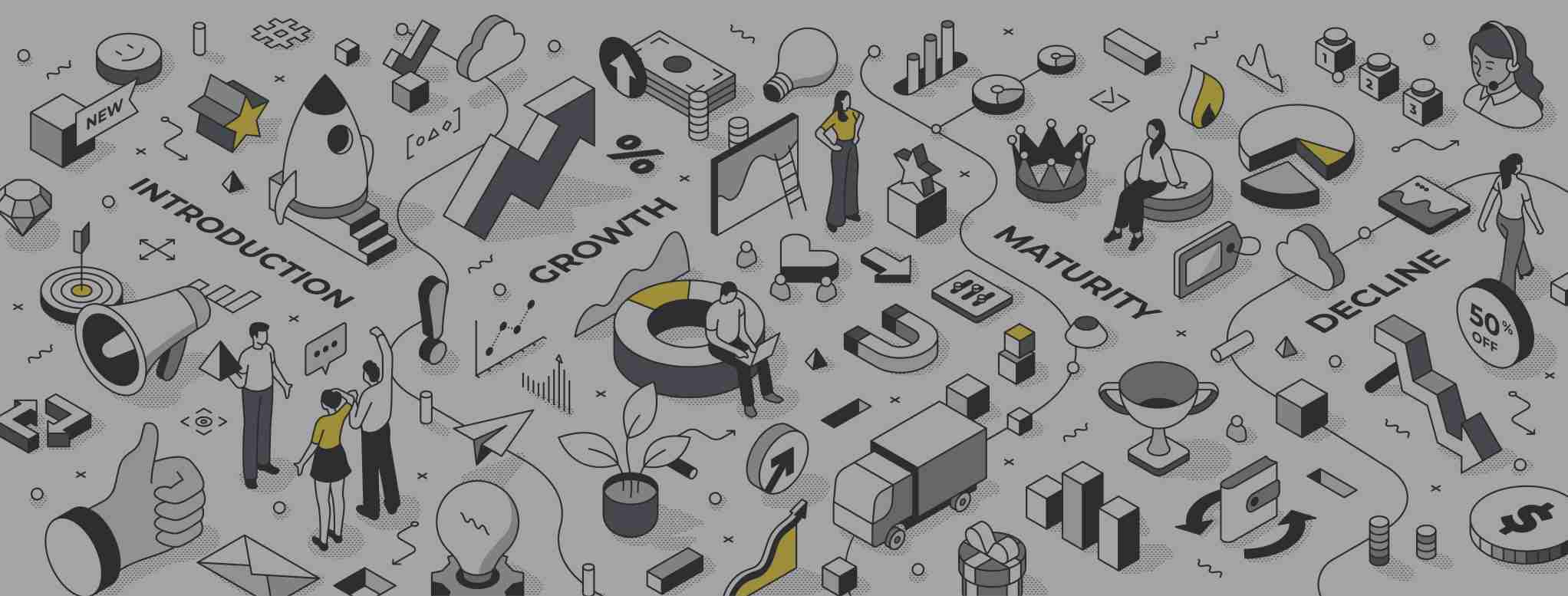This article is a 10-step guide on building a marketing funnel. Many businesses build funnels that do not convert and persevere with them ad infinitum. Of course, it’s a strategy, but it’s not a winning one.
Funnel building is a relatively simple process when considering they are most successful when well planned and defined.
Conversion funnel solution-led programs like click-funnels, Hubspot, Kartra, Drip, Infusionsoft, and Pardot are great for facilitating the activity of automating your workflows. Still, they are pointless if you don’t understand what you need to do for maximum effect.
There are certain assumptions I am going to make at this point. These are as follows:
-
- You have identified your buyer personas
- You know what types of content you can produce, at a minimum, blog posts
- You know what a landing page is
- You know what call to action is
- You know what a long tail keyword is
- You have a basic understanding of organic SEO
If you don’t, I will add some appendix entries at the end of this post.
How to plan a marketing funnel
So always approach each stage of the marketing funnel in its three basic requirements:
-
- Awareness Stage
- Consideration Stage
- Decision stage
Your prospects (soon to be customers, hopefully) have varying forms of activity when researching solutions to their problems. We call this part of the customer journey the top of the funnel. Typically they want to educate themselves or reassure themselves that their understanding of your offering is suitable to their needs.
Attract
The attract stage is the top of the overall funnel. The content you want to create answers generic searches your potential customers or target audience makes to educate themselves about the type of solution your company offers.
Typically searches at this level of the funnel start with “What is” and “Where can”, examples being
“What is cryptocurrency?” or “What is Bitcoin?” and “Where can I learn about cryptocurrencies?”
As you can see by the type of question, they are very educative searches. The prospect is trying to educate themselves about cryptocurrency and Bitcoin.
Convert
The convert stage is the middle of the sales funnel. The content marketing that should be created here is content that answers direct and specific questions about your product or service.
Typically, the questions for this section of the funnel start with “How to do” and “How can”.
Typical pieces of content would start with “How do I trade cryptocurrency”, “How can I trade Bitcoin”.
As you can see by this type of search question, it’s far more “about doing”, therefore showing more intent in the request.
Close
The closure stage is quite apparent. It is the searches that a prospect undertakes when they are ready to convert. That is to buy.
Content at this part of the funnel is about converting to a trial of your product, an outright sale or a consultation.
Content types that you could produce would be (to keep the crypto theme going) “Where can you buy cryptocurrency.”
Notice that this content is very much more about the purchase of cryptocurrency. From a sales-oriented perspective, you can be very direct with the content topic outputs.
Content Strategy
The digital marketing strategy is relatively straightforward from here. My advice on making marketing funnels work is to work on a marketing campaign with 4 to 5 pieces of content to each funnel stage. Each funnel stage should compromise the 4 to 5 articles and a landing page.
Each article should have a call to action that directs a post reader to the landing page placed in the content.
So your overall strategy looks like this, five articles, one call to action, one landing page.
You repeat this strategy for each stage of the funnel, so your overall full-length funnel, nurturing your prospects, has 15 articles, three landing pages, and three calls to action.
That is the essential guide that instructs you on planning a marketing funnel.
Something to consider
Blogging is the most straightforward form of content to produce, but it is not the only form of content you can create.
Have you heard of repurposing content?
Repurposing content is an excellent way to expand your content types. You can take a blog post and repurpose it to other content types:
-
- Podcast
- Youtube video
- Infographic
- Social media posts
This way you can create your initial sets of content and then amplify the messaging through other channels giving you more opportunity to prospect online and drive further opportunities from a broader reach.
How to build a marketing funnel
Below are ten steps that you must follow to ensure success in your marketing funnels.
#1 Know your market
Knowing your market is the first thing you need to understand. I don’t mean to know what market your product or service targets. I mean to know who is in the market, what they are doing for customer acquisition and what you are up against. Identifying this will help with your customer acquisition and brand awareness.
#2 Know your client
To know your client should go without saying. I don’t mean a reverse-engineered customer you imagined who would be perfect to buy your product or service. I mean a researched buyer persona or personas that are strategically developed profiles developed from real-life research and stories from prospects who have and have not bought your products or services.
#3 Devise your strategy
If you have completed steps 1 and 2, you are in a solid position to develop high-performing marketing funnels, although there is still much more to do. After doing your competitor analysis and defining your personas, you need to define your marketing strategy.
Your persona work will have given you the information you need to know:
-
- what content your prospects prefer,
- what social media channels they are active for work-related content in,
- what offline channels they use,
- what frustrations led to consideration for a product or service like the one you offer
- Why do they prefer your approach or your rival’s approach in choosing their final choices
- Who is responsible for what choice at which stage of the decision-making process
- Improve customer experience and encourage paying customers
These are just a few critical pieces of information you will need to devise your content-led inbound marketing strategy. The work you should have done by now will reveal more than I have listed, but you should get the gist.
#4 Find the skills
Let’s face it, not all of us are creatives; writing content and copy or producing graphics and videos are not everyday skills. We often have to outsource these, so make sure you know where to go for what you need. Although I’m a great believer in refraining from attempting something through fear of it not being polished enough, ultimately, you shouldn’t refuse a content type for that reason.
For example, I found a video/production company, and I chose them because they approach their production of video content from an inbound marketing perspective. This aligned our strategic goals.
Remember this saying, “Buy cheap, buy twice.” I live by that.
#5 Map your funnels
Now, this is where the funnel process starts to become apparent. As a rule of thumb, I work on 4-5 content outputs per funnel section. For me, the funnel is split into three parts:
-
- Attraction
- Conversion
- Closure
You should have the 4-5 outputs tied to a landing page with a gated offer for each stage. That means a page where you have an ebook or webinar, or video where the prospect can exchange their contact details for your educational content, and you can start building your lead nurturing list.
The Attraction stage content should be focused on answering generic searches related to your product or service.
The Convert stage content should be more focused, specifically talking about the problems or solutions your product solves or provides.
The Close stage content should be all about converting—so content aimed at trial sessions, demonstrations or consultation sessions.
#6 Build in automation
By now, you are nearly there. You’ve done the research, you’ve identified your ideal customers, and what will get them engaged in your content, you’ve designed your strategy, and mapped your content funnels.
But, it would help if you had marketing automation. It’s virtually impossible to manually maintain the attraction activity you need to entice your prospects into your funnels. This is where any number of tools come into play:
Marketing Automation
-
- Hubspot
- Marketo
- Infusionsoft
- Pardot
- Kartra
- Click-funnels
Email Automation
-
- MailChimp
- Drip
- Act on
- Hubspot
- Infusionsoft
- Marketo
- Pardot
Social Automation
-
- Hubspot
- Hootsuite
- Crowdfire
- Agora Post
- Buffer
- CoSchedule
- SocialAlert
As you can see, some of the better automation tools provide a number of different services and it's these tools that businesses should invest in. Smaller companies that are budget-conscious should look at combinations, like Kartra and Crowdfire or click-funnels and Hootsuite.
Whatever the choice, be prepared to spend some revenue on marketing automation technology.
#7 Create the content
Even with the best planning, you will have to create the content at some point. Content can come in many formats, so use variety, but base it on what your personas tell you. There can be cases of being creative for creative sake and not getting any engagement for your efforts.
Things to consider:
-
- Blogging (long form, short form and micro)
- Webinars
- Video
- Motion Graphics
- Vlogs
- Infographics
- How to’s
- Case Studies
- Reviews
- Slideshare
- Ebooks
- Research
- Guides
#8 Build your landing pages
More comprehensive platforms like Hubspot allow you to build and host your landing pages within the media. This is great from a media management aspect as your content and images are all centralised, but they are also tied in if you decide to change marketing automation software down the line.
Landing pages are not the standard pages in your website, at least not to a seasoned marketer. A landing page is one of those mentioned in #5, which falls at the bottom of each funnel at each process stage (Attract, Convert, Closure).
If you are using a combination of software due to budget restrictions, the best landing page software I’d recommend is:
-
- Unbounce
- Leadpages
Unbounce, for me, is more user-friendly; you can also buy good Unbounce templates at Themeforest and customise those for your use, as you can the onsite Unbounce templates.
#9 Test the funnel A+B Test
Wow, you’re now so close to becoming a funnel expert; you need some time to fashion your distinctive style over the framework I have supplied.
But, once you create your content and put it live, you need to A + B test it. That means you set up two landing pages, maybe one with a question-led text and the other with statement-led text and see which performs better.
You could also try testing the colours of buttons, different calls to action, and other images and make sure you do this consistently.
I use Hotjar to generate heatmaps of user activity and find out where users click scrolling and how long they remain on a page.
#10 Monitor the data
Finally, for good practice and to ensure maximum returns and conversions, use the data the marketing automation platforms generate to constantly revise and review your content outputs. The ultimate aim is to discover what works in your content outputs and what doesn’t. You then ramp up activity on the content that returns the most website traffic and conversions.
So, that is how you build a marketing funnel. It takes much work to get it right, but once you have it right, you can achieve:
-
- More website traffic
- Higher conversions
- Lower wastage of effort
- Better customers
- More refinement
- Increase in turnover
- Aligning of marketing and sales ambitions
Suppose that sounds like your business’s ideal strategy, then it’s time to kick off. Alternatively, if your current marketing funnels aren’t performing well, compare your approach to the ten steps, establish what’s missing, and try incrementally increase optimisation.




